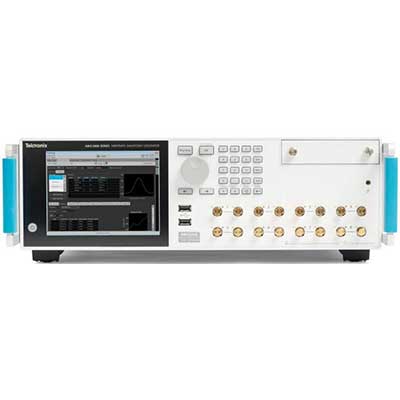

During preparation for an upcoming sales meeting, I was asked to explain the value proposition of the Tektronix AWG5200 arbitrary waveform generators, such as the eight-channel AWG5208. The question was: Why did it accomplish a task for a customer that no other competing product could perform?
For those who don't know, an AWG or arbitrary waveform generator is like a reverse oscilloscope. It takes samples in memory and "plays" them in the real world. They are very popular for developing new types of signal processing, such as MIMO radar. Anything you can dream up can be played. Later, hardware engineers can create a device based on the signals you create. AWGs are defined by basic specifications like sample rate (highest frequency signal) and dynamic range (or how small a signal you can create in the presence of a large signal).
Sample rate and high dynamic range are fairly easy to understand. But I was asked, why is having eight channels in one box a value? Can't you just use eight signal generators tied together? In fact, we often do just that. To generate eight radar signals, a customer could use eight signal generators:

Or you could use four two-channel AWGs:

Apart from the logistical problem of eight signal generators, what is wrong with this approach? In test and measurement, I often look for a simple metaphor. So I grabbed this one. Suppose I want to measure this piece of wood?

But I only have four 12-inch rulers.

I count three complete rulers (3x12=36 inches) plus another 8 inches on the last ruler make 44 inches in total.
But suppose I have the correct tool, a tape measure. That tape measure is like four rulers in one.


Now I can easily see that the wooden block is really 45.5 inches, not 44 inches. Why did using four rulers not give me the same result as a single tape measure?
First, there is offset error. Turns out each ruler doesn't start precisely at 0. By lining up the wood block with the end of the ruler, I was adding a small amount of error with each 12-inch measurement. I laid the rulers end to end, compounding the offset error and creating a synchronization error because each 12-inch section was not the same. And because the amount of "extra ruler" beyond the digits is different on each ruler, I might get a different measurement if I repeat and line the rulers up in a different order.
Offset error, synchronization error, lack of repeatability—all these problems plague multiple instruments when they are tied together, whether oscilloscopes or signal generators. You can try locking references, but you can get high frequency phase problems. You can also get synchronization errors when executing complex multi-step AWG sequences as one can trigger slightly ahead of the other.
Can I work really hard to make four rulers take the place of a tape measure? Of course! But what is the fastest, most accurate and most repeatable way to measure the wood? With the right tool!
On a side note, 8-channel oscilloscopes are also pretty useful....



